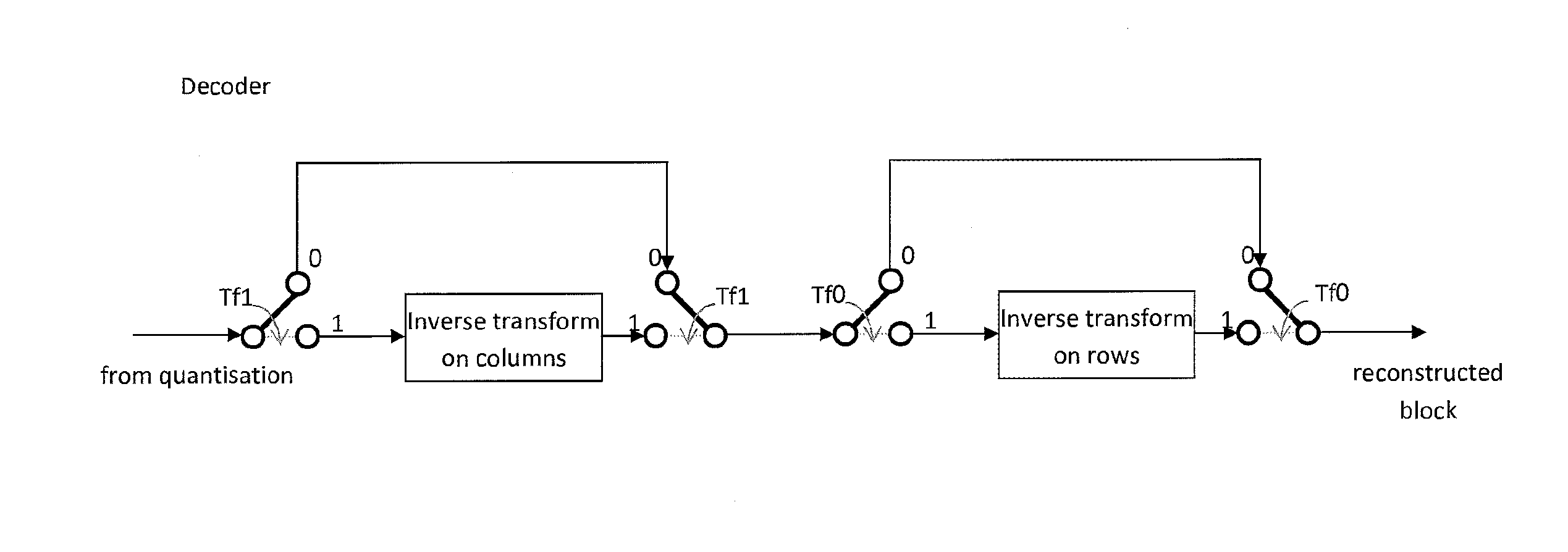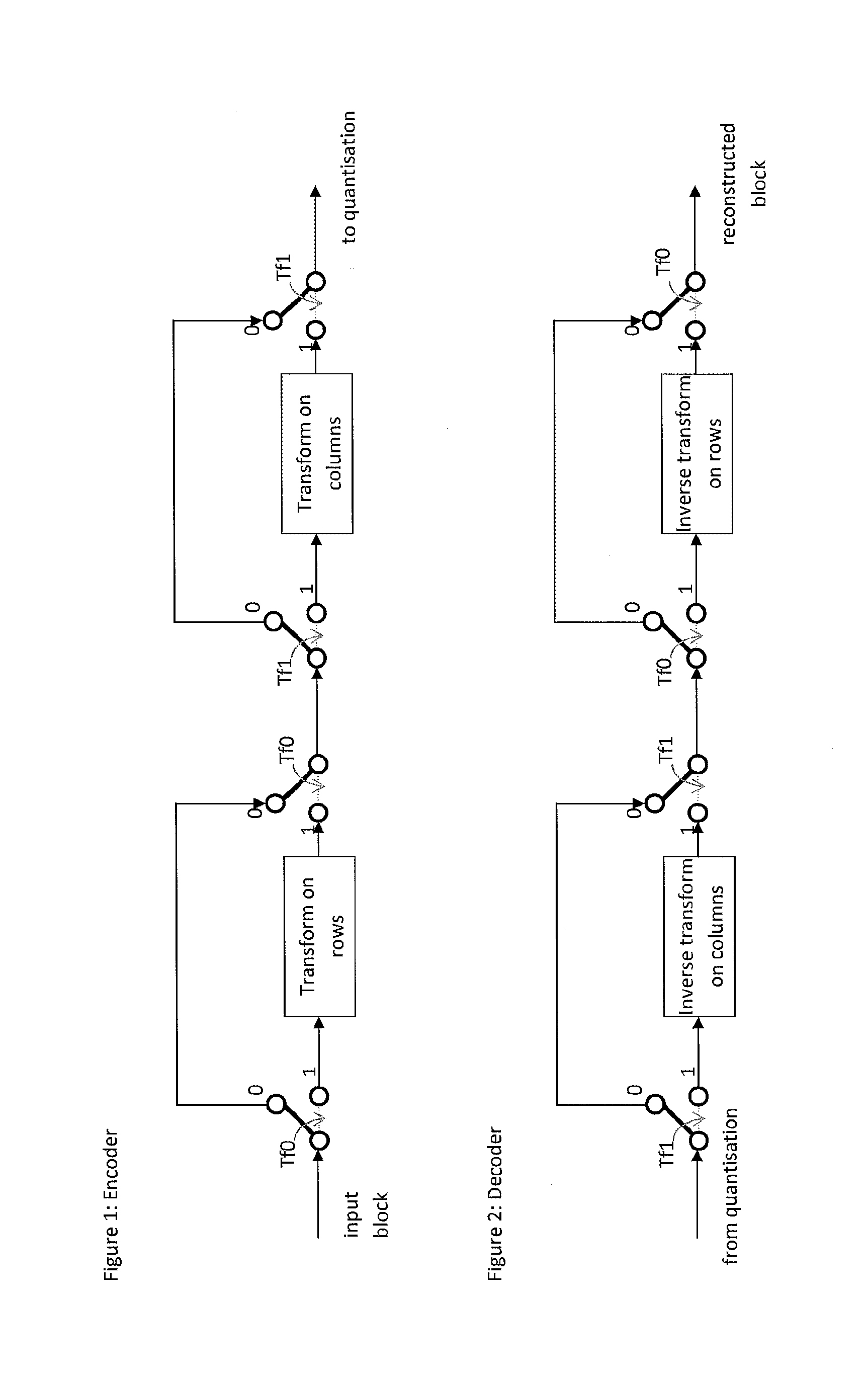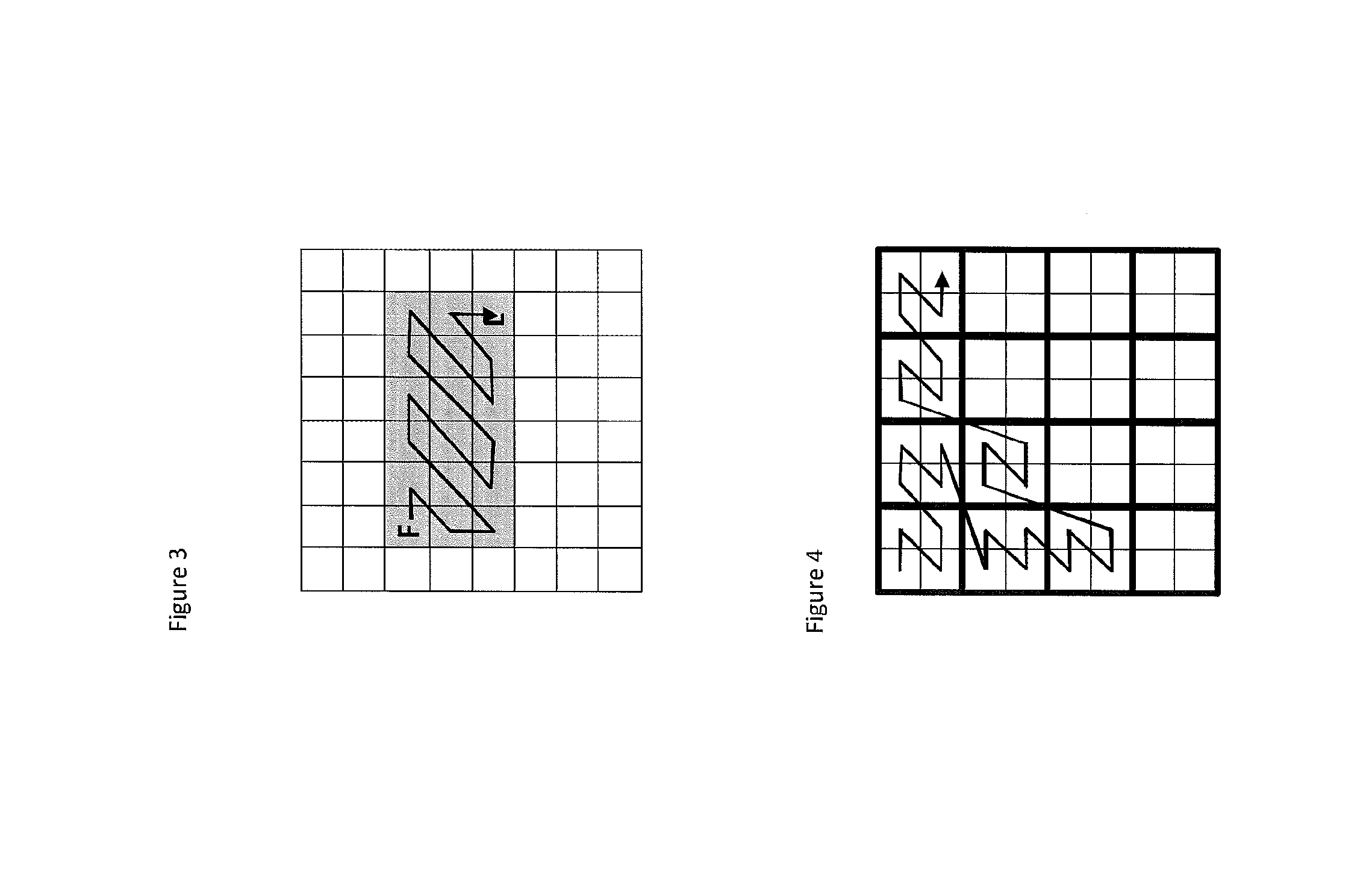Video encoding and decoding using transforms
a technology of transforms and video, applied in the field of video compression and decompression systems, can solve the problems of inability to modify the transformation process in order, the process is destructive, and the capacity required to represent the data in the output of the transformation process may still be too high for many applications
- Summary
- Abstract
- Description
- Claims
- Application Information
AI Technical Summary
Benefits of technology
Problems solved by technology
Method used
Image
Examples
Embodiment Construction
[0029]The present invention will now be described by way of example with reference to the accompanying drawings, in which:
[0030]FIG. 1 is a block diagram illustrating a feature on an encoder according to an embodiment of the invention;
[0031]FIG. 2 is a block diagram illustrating the feature on a decoder according to the embodiment;
[0032]FIG. 3 is a diagram illustrating an alternative to the known zig-zag scanning approach;
[0033]FIG. 4 is a diagram illustrating a further alternative scanning approach;
[0034]FIG. 5 is a block diagram illustrating a feature on an encoder according to a further embodiment of the invention;
[0035]FIG. 6 is a block diagram illustrating the feature on a decoder according to the embodiment;
[0036]FIG. 7 is a block diagram illustrating a feature on a decoder according to a further embodiment of the invention
[0037]This invention presents a mode to perform the transformation process—Transform Skip Mode (TSM). As described above, the most common transform used in ...
PUM
 Login to View More
Login to View More Abstract
Description
Claims
Application Information
 Login to View More
Login to View More - R&D
- Intellectual Property
- Life Sciences
- Materials
- Tech Scout
- Unparalleled Data Quality
- Higher Quality Content
- 60% Fewer Hallucinations
Browse by: Latest US Patents, China's latest patents, Technical Efficacy Thesaurus, Application Domain, Technology Topic, Popular Technical Reports.
© 2025 PatSnap. All rights reserved.Legal|Privacy policy|Modern Slavery Act Transparency Statement|Sitemap|About US| Contact US: help@patsnap.com



